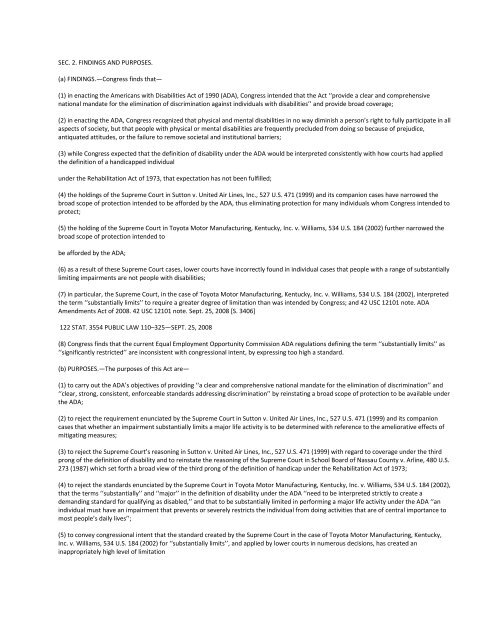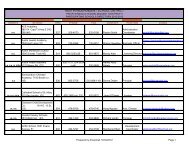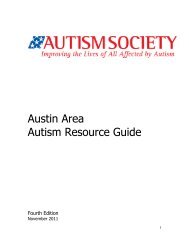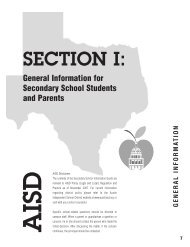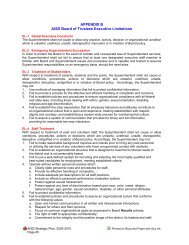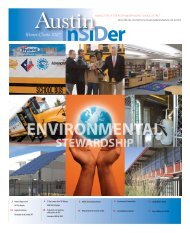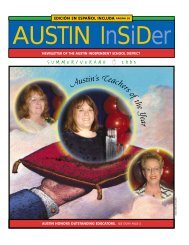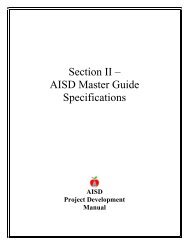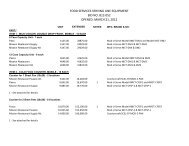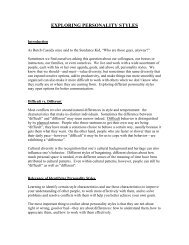SEC. 2. FINDINGS AND PURPOSES.(a) FINDINGS.—Congress finds that—(1) in enacting the Americans with Disabilities Act of 1990 (ADA), Congress intended that the Act ‘‘provide a clear and comprehensivenational mandate for the elimination of discrimination against individuals with disabilities’’ and provide broad coverage;(2) in enacting the ADA, Congress recognized that physical and mental disabilities in no way diminish a person’s right to fully participate in allaspects of society, but that people with physical or mental disabilities are frequently precluded from doing so because of prejudice,antiquated attitudes, or the failure to remove societal and institutional barriers;(3) while Congress expected that the definition of disability under the ADA would be interpreted consistently with how courts had appliedthe definition of a handicapped individualunder the Rehabilitation Act of 1973, that expectation has not been fulfilled;(4) the holdings of the Supreme Court in Sutton v. United Air Lines, Inc., 527 U.S. 471 (1999) and its companion cases have narrowed thebroad scope of protection intended to be afforded by the ADA, thus eliminating protection for many individuals whom Congress intended toprotect;(5) the holding of the Supreme Court in Toyota Motor Manufacturing, Kentucky, Inc. v. Williams, 534 U.S. 184 (2002) further narrowed thebroad scope of protection intended tobe afforded by the ADA;(6) as a result of these Supreme Court cases, lower courts have incorrectly found in individual cases that people with a range of substantiallylimiting impairments are not people with disabilities;(7) in particular, the Supreme Court, in the case of Toyota Motor Manufacturing, Kentucky, Inc. v. Williams, 534 U.S. 184 (2002), interpretedthe term ‘‘substantially limits’’ to require a greater degree of limitation than was intended by Congress; and 42 USC 12101 note. ADAAmendments Act of 2008. 42 USC 12101 note. Sept. 25, 2008 [S. 3406]122 STAT. 3554 PUBLIC <strong>LA</strong>W 110–325—SEPT. 25, 2008(8) Congress finds that the current Equal Employment Opportunity Commission ADA regulations defining the term ‘‘substantially limits’’ as‘‘significantly restricted’’ are inconsistent with congressional intent, by expressing too high a standard.(b) PURPOSES.—The purposes of this Act are—(1) to carry out the ADA’s objectives of providing ‘‘a clear and comprehensive national mandate for the elimination of discrimination’’ and‘‘clear, strong, consistent, enforceable standards addressing discrimination’’ by reinstating a broad scope of protection to be available underthe ADA;(2) to reject the requirement enunciated by the Supreme Court in Sutton v. United Air Lines, Inc., 527 U.S. 471 (1999) and its companioncases that whether an impairment substantially limits a major life activity is to be determined with reference to the ameliorative effects ofmitigating measures;(3) to reject the Supreme Court’s reasoning in Sutton v. United Air Lines, Inc., 527 U.S. 471 (1999) with regard to coverage under the thirdprong of the definition of disability and to reinstate the reasoning of the Supreme Court in School Board of Nassau County v. Arline, 480 U.S.273 (1987) which set forth a broad view of the third prong of the definition of handicap under the Rehabilitation Act of 1973;(4) to reject the standards enunciated by the Supreme Court in Toyota Motor Manufacturing, Kentucky, Inc. v. Williams, 534 U.S. 184 (2002),that the terms ‘‘substantially’’ and ‘‘major’’ in the definition of disability under the ADA ‘‘need to be interpreted strictly to create ademanding standard for qualifying as disabled,’’ and that to be substantially limited in performing a major life activity under the ADA ‘‘anindividual must have an impairment that prevents or severely restricts the individual from doing activities that are of central importance tomost people’s daily lives’’;(5) to convey congressional intent that the standard created by the Supreme Court in the case of Toyota Motor Manufacturing, Kentucky,Inc. v. Williams, 534 U.S. 184 (2002) for ‘‘substantially limits’’, and applied by lower courts in numerous decisions, has created aninappropriately high level of limitation
necessary to obtain coverage under the ADA, to convey that it is the intent of Congress that the primary object of attention in cases broughtunder the ADA should be whether entities covered under the ADA have complied with their obligations, and to convey that the question ofwhether an individual’s impairment is a disability under the ADA should not demand extensive analysis; and(6) to express Congress’ expectation that the Equal Employment Opportunity Commission will revise that portion of its current regulationsthat defines the term ‘‘substantially limits’’ as ‘‘significantly restricted’’ to be consistent with this Act, including the amendments made bythis Act. SEC. 3. CODIFIED FINDINGS. Section 2(a) of the Americans with Disabilities Act of 1990 (42 U.S.C. 12101) is amended—(1) by amending paragraph (1) to read as follows:‘‘(1) physical or mental disabilities in no way diminish a person’s right to fully participate in all aspects of society, with PUBLIC <strong>LA</strong>WSPUBLIC <strong>LA</strong>W 110–325—SEPT. 25, 2008 122 STAT. 3555 yet many people with physical or mental disabilities have been precluded from doingso because of discrimination; others who have a record of a disability or are regarded as having a disability also have been subjected todiscrimination;’’; (2) by striking paragraph (7); and (3) by redesignating paragraphs (8) and (9) as paragraphs (7) and (8), respectively.SEC. 4. DISABILITY DEFINED AND RULES OF CONSTRUCTION.(a) DEFINITION OF DISABILITY.—Section 3 of the Americans with Disabilities Act of 1990 (42 U.S.C. 12102) is amended to read as follows:‘‘SEC. 3. DEFINITION OF DISABILITY.‘‘As used in this Act: ‘‘(1) DISABILITY.—The term ‘disability’ means, with respect to an individual—‘‘(A) a physical or mental impairment that substantially limits one or more major life activities of such individual;‘‘(B) a record of such an impairment; or‘‘(C) being regarded as having such an impairment (as described in paragraph (3)).‘‘(2) MAJOR LIFE ACTIVITIES.—‘‘(A) IN GENERAL.—For purposes of paragraph (1), major life activities include, but are not limited to, caring for oneself, performing manualtasks, seeing, hearing, eating, sleeping, walking, standing, lifting, bending, speaking, breathing, learning, reading, concentrating, thinking,communicating, and working.‘‘(B) MAJOR BODILY FUNCTIONS.—For purposes of paragraph(1), a major life activity also includes the operation of a major bodily function, including but not limited to, functions of the immune system,normal cell growth, digestive, bowel, bladder, neurological, brain, respiratory, circulatory, endocrine, and reproductive functions.‘‘(3) REGARDED AS HAVING SUCH AN IMPAIRMENT.—For purposes of paragraph (1)(C):‘‘(A) An individual meets the requirement of ‘being regarded as having such an impairment’ if the individual establishes that he or she hasbeen subjected to an action prohibited under this Act because of an actual or perceived physical or mental impairment whether or not theimpairment limits or is perceived to limit a major life activity.‘‘(B) Paragraph (1)(C) shall not apply to impairments that are transitory and minor. A transitory impairment is an impairment with an actualor expected duration of 6 months or less.‘(4) RULES OF CONSTRUCTION REGARDING THE DEFINITION OF DISABILITY.—The definition of ‘disability’ in paragraph (1) shall be construedin accordance with the following: ‘‘(A) The definition of disability in this Act shall be construed in favor of broad coverage of individualsunder this Act, to the maximum extent permitted by the terms of this Act.‘‘(B) The term ‘substantially limits’ shall be interpreted consistently with the findings and purposes of the ADA Amendments Act of 2008. onGSDDPC44 with PUBLIC <strong>LA</strong>WS122 STAT. 3556 PUBLIC <strong>LA</strong>W 110–325—SEPT. 25, 2008‘‘(C) An impairment that substantially limits one major life activity need not limit other major life activities in order to be considered adisability.‘‘(D) An impairment that is episodic or in remission is a disability if it would substantially limit a major life activity when active.
- Page 3 and 4:
Tabla de ContenidosPrólogo .......
- Page 5 and 6:
PrólogoLa lectura es una de las ha
- Page 7 and 8:
Un agradecimiento especial a las si
- Page 9 and 10:
El manual sobre la dislexia contien
- Page 11 and 12:
Las características de la dislexia
- Page 13 and 14:
II.Procedimientos para evaluar a es
- Page 15 and 16:
El primer paso en el proceso de eva
- Page 17 and 18:
• Ser seleccionados y administrad
- Page 19 and 20:
Además, el personal que participa
- Page 21 and 22:
no debe considerar los efectos de m
- Page 23 and 24:
IV.Modelo de instrucción para estu
- Page 25 and 26:
• Instrucción individualizada en
- Page 27 and 28:
Washington, DC: National Institute
- Page 29 and 30:
o Morfologíao Ortografíao Semánt
- Page 31 and 32:
Esta página se ha dejado en blanco
- Page 33 and 34:
AgradecimientosEsta guía ha sido c
- Page 35 and 36:
Esta página se ha dejado en blanco
- Page 37 and 38:
Respuesta a la Intervención (RtI,
- Page 39 and 40:
Fidelidad en la implementaciónLos
- Page 41 and 42:
énfasis del progreso planificado y
- Page 43 and 44:
para la implementación exitosa de
- Page 45 and 46:
• Comprar o desarrollar sus propi
- Page 47 and 48:
desarrollo de las habilidades y la
- Page 49 and 50:
de instrucción que utilizan métod
- Page 51 and 52:
Añadida por el Acto de 2009, 81 a
- Page 53 and 54:
(B) 45 horas de contacto en cursos
- Page 55 and 56:
SUBCHAPTER E. DENEGACIÓN DE LA LIC
- Page 57 and 58:
Añadida por el Acto de 2009, 81 a
- Page 59:
Apéndice F: AcomodosAcomodos en el
- Page 62 and 63: tipos de preguntas de la prueba, es
- Page 64 and 65: educación del estudiante. Así, un
- Page 66 and 67: los fondos de educación especial p
- Page 68 and 69: 18. ¿Quién es la persona encargad
- Page 70 and 71: • Si durante la intervención de
- Page 72 and 73: identificado como “alumno en ries
- Page 74 and 75: estrategias de instrucción, donde
- Page 76 and 77: 42. ¿Quién determina el contenido
- Page 78 and 79: De acuerdo con la Oficina de Derech
- Page 80 and 81: Apéndice H: Contactos para mayor i
- Page 82 and 83: OrganizacionesNota: Esta no es una
- Page 84 and 85: Hospital para niños Scottish Rite
- Page 86 and 87: Dislexia: la dislexia es una discap
- Page 88 and 89: Investigaciones basadas en un marco
- Page 90 and 91: Foorman, B. (Ed.) (2003). Preventin
- Page 92 and 93: Apéndice K: Preparación para la e
- Page 94 and 95: No. Sin embargo, si usted desea que
- Page 96 and 97: eficaz también. La escuela tambié
- Page 98 and 99: Para pedir copias de esta publicaci
- Page 100 and 101: • Si la información evaluativa n
- Page 102 and 103: Apéndice M: Sección 504 Código d
- Page 104 and 105: (e) Assistant Secretary means the A
- Page 106 and 107: that resulted in limited participat
- Page 108 and 109: applicants for employment to indica
- Page 110 and 111: operated by the recipient.(3) Resid
- Page 114 and 115: ‘‘(E)(i) The determination of w
- Page 116 and 117: COMPLIANCE STATEMENTTITLE VI, CIVIL


